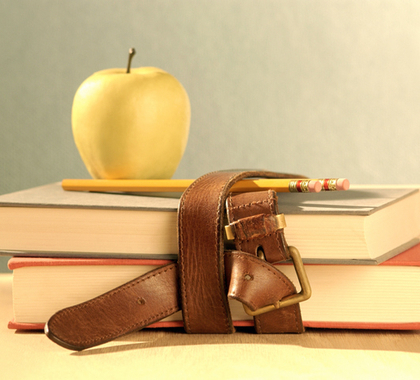There is a shift away from teaching classic literature in the schools, according to a report by the Brown Center. Michael Godsey, a high school English teacher at San Luis Obispo High School in California says the culprit, at least in part, is Common Core standards. The K-12 standards for English language arts focus on text comprehension and communication techniques and deemphasize reading of imaginative literature such as fiction by Dostoyevsky, Austen, and Homer.
“There’s been a definite shift away from the classics and toward the teaching of reading and writing skills,” Godsey told School Reform News.
Common Core supporters tout the standards’ inclusion of a requirement to teach one Shakespeare play and one American literary work, but there is no way to be certain the underlying themes and meanings of these texts will be taught or gauged, says Emory University English professor Mark Bauerlein.
“Those are just recommendations; they’re not requirements,” Bauerlein said. “If it’s not going to be tested, teachers and developers are probably going to ignore those standards.”
Less Classic Fiction
Teachers are including more nonfiction articles and less classic fiction in their classes because of Common Core. According to a 2015 Brown Center Report on American Education, fourth-grade teachers are teaching 8 percent more nonfiction works than in 2009.
The report states the English Language Arts standards “call for teachers to shift the content of reading materials away from stories and other fictional forms of literature in favor of more non-fiction.”
“Parents are not happy about the decrease in literature study, if they know about it,” said Sandra Stotsky, a professor of education reform at the University of Arkansas.
Godsey says administrators instructed him to make literature only 30 percent of his class content.
“People who are part of my school’s administration explicitly encourage us to teach less literature,” Godsey said.
At a reading conference Godsey attended, the keynote speaker advised teachers to “ditch literature” because “literary fiction is not critical to college success.” The speaker suggested teaching a module on internet use instead.
‘Less Interested in Reading’
Technology is helpful in many teaching situations, but it can also be incredibly distracting for youngsters, Bauerlein notes.
“Teachers find students in middle school and high school are less and less interested in reading, in part because they’re so caught up in the media and television,” Bauerlein said.
Television, social media, and other internet outlets have shortened students’ attention spans, making causing them less willing to sit down and read a heavier-themed book, Godsey says.
“For three years I’ve been teaching mainstream English, and the kids generally do not like to read,” Godsey said. “It seems like it’s getting harder and harder to get them to read for homework, too.
“When I do see mainstream students reading for pleasure, it’s usually [popular contemporary young-adult fiction author] John Green, and it used to be The Hunger Games,” he said.
Simpler books are more appealing to the short-attention-span millennial crowd, he says. The lack of depth has taken a toll on consumption of classic literature consumption, Stotsky says.
“Young adult literature is generally not as well-written as the classics, because they’re not classics. That’s the point,” she said.
Relevance of Classic Literature
Bauerlein says ignoring the wealth of wisdom available in classic literature seems irresponsible, yet that’s what Common Core does.
“The unfortunate thing is that there is much classic literature that is in fact quite relevant to young people’s lives if you have a teacher who brings it alive,” he said.
Bauerlein offers Virgil’s Aeneid as a prime example of relatability for teenage readers. The classic tale follows the Trojan warrior Aeneas who, on his way to Italy, meets and falls in love with Dido, the queen of Carthage. Forced by the gods, Aeneas leaves Dido, and in despair of his absence, Dido kills herself.
“This rejection is the same kind of thing that 15 and 16-year-olds deal with,” Bauerlein said. “This is their chance to see one of the most famous rejections in Western literature.”
Vivian Hughbanks ([email protected]) writes from Hillsdale, Michigan.
Image by Sala Alawadhi.
Learn More:
Tom Loveless, “The 2015 Brown Center Report on American Education: How Well Are American Students Learning?” Brown Center on American Education, March 2015: https://heartland.org/policy-documents/2015-brown-center-report-american-education-how-well-are-american-students-learning




